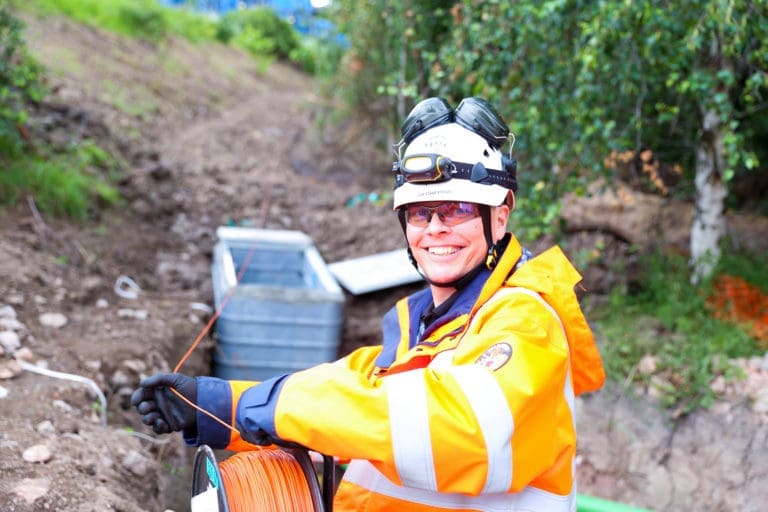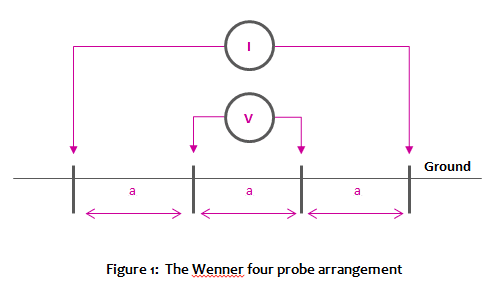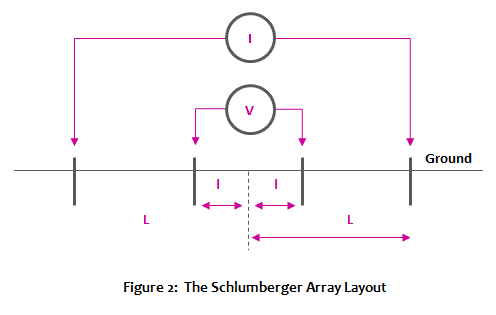Ever wondered what to do during a Thunderstorm? Here’s a safety guide for when lightning strikes.
This safety guide provides information on the basic physical characteristics of lightning, the formation and types of lightning strikes.
It will give tips on how to estimate how far the lightning flash is from your location and on what to do in a thunderstorm to protect human lives and property from this destructive force of nature.
GreyMatters exists to protect “life” from the harmful effects of lightning and electrical systems. In view of the increasingly unpredictable weather trends, which include the increase in lightning activity, this objective is more relevant than ever before.
We will look at:
- When Lightning Strikes
- Creating the Spark
- Let’s review the Physics
- Making Life-Saving Decisions at Lightning Speed
- Is it safe to… carry on normal living, during a thunderstorm?
- What to do if someone is struck by lightning
#1 – When Lightning Strikes
Climate Change
Intensive sunshine and severe thunderstorms during hot summers, extended rainfall during mild winters – this is what to expect when the effect of climate change become evident.
Lightning Facts in the United Kingdom
About 300,000 lightning strikes hit the ground in Britain each year with 30% of reported lightning strikes causing severe damage.
Severe thunderstorms pose a threat to human lives and cause damage to buildings and infrastructure:
- hail destroys roofs, inter gardens and cars,
- Lightning strikes cause fire or surge damage to electrical devices and systems.
- Surges may occur even if lightning does not strike in the immediate vicinity.
#2 – Creating the Spark
How is Lightning Generated?
If you’ve ever scuffed your socks on carpeting on a dry day and touched metal, or “shocked” someone unexpectedly, you’ve experienced a discharge of static electricity.
Similarly, the most prominent theory of lightning generation is based onSmall Hail collisions between ice crystals and small hail (or graupel) in the mid-levels of a developing thunderstorm.

Lighter ice crystals gain positive charge and are carried by the updraft to the thunderstorm’s anvil, or top. The heavier graupel particles, having acquired a negative charge from the collision, remain suspended by the updraft in the mid-levels of the thunderstorm.
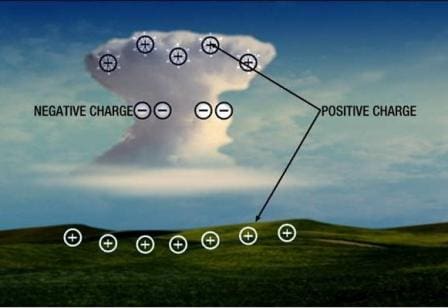
This increasingly negative charge in the lower half of the thunderstorm in turn induces, or forces, positive charge to increase along the ground (and anything attached to the ground), like a shadow, but charged.
In the world of electricity … opposites attract
Eventually the negative and positive charges build up to a point when the air between them can’t insulate them from each other, leading to the lightning discharge.
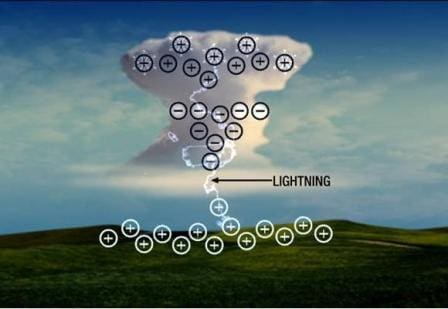
First, this is how most cloud-to-ground lightning strikes occur.
However, roughly 80% of lightning actually occurs within the cloud, never reaching the ground.
Also, this isn’t how all cloud-to-ground lightning takes place.
A small fraction of lightning cloud-to-ground flashes occur up to 15 miles away from a thunderstorm’s precipitation core, due to positive charge build-up in the storm’s anvil (remember those ice crystals?).Lightning
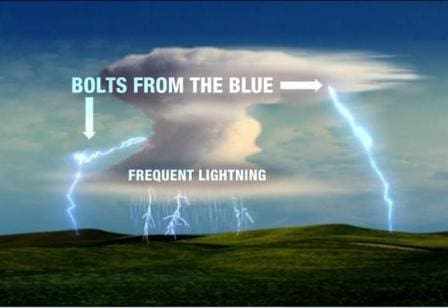
These so-called “bolts-from-the-blue” typically contain higher currents than the more ordinary lightning and, therefore, are believed to be responsible for a disproportionate number of forest fires and power line damage.
#3 – Let’s Review the Physics
What does lightning look like?
A lightning flash is only centimetres thick however, every metre of lightning shines as bright as 1 million 100 watt light bulbs since the lightning flash is electrically charged.
It may come as a surprise that a lightning flash, with a few exceptions, travels from the ground to the clouds! Fractions of a second before the actual lightning flash, an upward streamer is met by a downward leader however this is hardly visible to the human eye.
What causes lightning?
Lightning originates from thunder cells which may have a diameter of several kilometres. Positively and negatively charged areas are created due to an uneven distribution of ice and water, as well as updraft and downdraft winds in the cloud.
If the voltage differences become too high, an electrical discharge occurs (lightning flash). Generally, thunder cells only last about 30 minutes and cause two to three lightning flashes per minute during this time.
What types of lightning are there?
There are cloud-to-ground flashes, ground-to-cloud flashes and cloud-to-cloud flashes.
In the case of a cloud-to-ground flash, the electrically charged cloud equalises with the ground below. The lightning discharge is initiated by downward leaders from the cloud to the ground. They frequently hit flat ground and low buildings. Branching to the ground is characteristic of cloud-to-ground flashes.
Ground-to-cloud flashes, also referred to as upward flashes, may strike very high, exposed objects such as steeples, radio masts or mountain peaks. Upward branching is characteristic of ground-to-cloud flashes.
Cloud-to-cloud flashes occur within a cloud or between two clouds, however, they do not occur between clouds and the ground.

How to Identify and Thunderstorm?
Outdoors is the most dangerous place to be during a thunderstorm. Therefore always keep an eye on the weather: Look for cumulous clouds with a typical “cauliflower” or “candyfloss” shape that may form towering clouds.
Muggy weather with increasing wind, rolls of thunder, sheet lightning and falling air pressure are all signs that a thunderstorm is approaching.
How often does lightning strike?
Each lightning strike may consist of several partial lightning strikes. During the summer months, the EU experiences 100’s of millions of partial lightning strikes each month. On a day with a high thunderstorm activity, thousands of partial lightning strikes may occur in an area the size of the average town. For the Northern hemisphere, more than 95% of all lightning flashes occur during the months of June to August. Thunderstorm days and lightning strikes per square kilometre – also referred to as ground flash density – generally increases the closer to the equator you go.

How fast does lightning approach?
If there’s a delay of thunder 30 seconds after you saw a lightning flash you are on the safe side as the thunderstorm is far enough away. If you hear thunder 15 seconds after a lightning flash, it is only about 5 km away.
You are at high risk if you hear thunder less than 5 seconds after a lightning flash.
A lightning flash travels at about 300,000 km/s and is approximately 900,000 times faster than the relatively slow sound wave which has a speed of “only” about 330 m/s. This is why you see the flash quite a while before you hear the thunder.
Estimating the distance from a thunderstorm
A common rule of thumb for roughly estimating the distance from a thunderstorm is to count the number of seconds between a flash of lightning and the next clap of thunder. Divide this number by 3 to get the number of kilometres.
The European Cooperation for lightning Detection (EUCLID) is a collaboration among national lightning detecting networks with the aim to identify and detect lightning all over the European area. www.euclid org
#4 – Making Life-Saving Decisions at Lightning Speed
Lightning Strikes in open terrain
When lightning strikes and you are caught outdoors, there are two main dangers:
- First and foremost, being the highest point around.
- And secondly, when lightning strikes near you.
In this case, the current is conducted to the ground and quickly spreads out in all directions forming a dangerous potential gradient.
For this reason, never lie flat on the ground if you are caught in the open during a thunderstorm. Crouch down and immediately put your feet as close together as possible and wrap your arms around your legs.
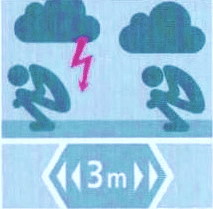
Put down bicycles, golf bags or golf clubs and keep a distance of at least 1m, or even better 3m. from these objects. Hollows, beds of stone pits or protruding rocks may provide shelter. If you are in a group of people, spread out. It is vital to keep a distance of at least 1m, or even better 3m to walls, metal fences, etc.
Avoid trees, groves, edges of the forest and wooden poles of overhead lines, since they are particularly vulnerable to lightning. The risk of being hit by a lightning strike inside a forest with trees of uniform height is considerably lower, however, keep a distance from all trees and limbs of 10m.
NOTE! Immediately crouch down if the time period between a flash and thunder is less than five seconds! Put your feet as close together as possible, wrap your arms around your legs and tuck your head in. Keep a distance of 3m to the next person.
In the mountains
A thunderstorm in the mountains is extremely dangerous because it appears surprisingly quickly. Have a close look at the weather forecast when planning your tour. Check the barometer when stopping at shelter huts and strictly follow the instructions of hut personnel or your mountain guide. If you do not reach the next lightning-protected shelter hut in time, a cave or protruding rock may provide shelter. Do not touch moist rock walls and any ladders or metal objects, for example along fixed rope routes. Wait until the last thunder or lightning has ended.

NOTE! In the mountains: Keep of the peak, avoid being the highest point around. Keep a distance of at least 1m, or even better 3m from other people and metal objects such as hooks, ladders and rope.
On a playing field
Sportsmen and sportswomen as well as spectators are highly at risk during a thunderstorm if they stand on the playing field, uncovered stands or next to poles or flagpoles. Keep at least 1m, or even better 3m away from poles. Covered stands need a lightning protection system on the roof to provide safety.
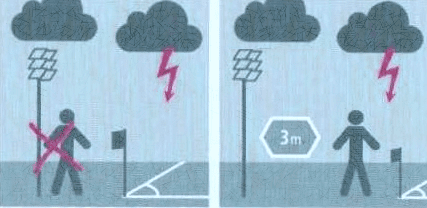
NOTE! Keep at least 3m away from radio masts and flagpoles. Put down flags, umbrellas and golf clubs.
During fishing or hunting
Fishermen on the water are highly at risk during a thunderstorm. If you have just caught a fish, take it off the hook immediately, lay down your fishing rod and seek shelter on land! Hunters should immediately leave open tree stands at the first sign of lightning and thunder.
During camping
Never erect your tent directly next to poles or pylons at the edge of the forest or next to isolated trees. Use an insulating mattress and do not touch the tent poles during a thunderstorm. As with cars, caravans are generally protected by Faraday’s cage principle.
Attention: If your tent or caravan has no metal structure, it is equally dangerous to stay there than in the open field.
NOTE! Keep and distance of at least 3m from other tents and caravans. Crouch down in your tent on an insulating, dry mattress. Keep sufficient distance from the tent wall!
On a golf course
The golf course is one of the most dangerous places to be during a thunderstorm. Avoid isolated trees, open terrain and the edge of the forest. Shelters are only safe when equipped with a lightning protection system in conformity with the relevant standards.

NOTE! If the time period between a flash and thunder is less than 30 seconds, get inside a club house or shelter.
If the time period between a flash and thunder is less than 30 seconds, go straight to a club house, shelter or car. To get there do not walk in groups of people, avoid physical contact with each other and consider leaving your golf equipment behind.
NOTE! If the time period between a flash and thunder is shorter than 5 seconds, crouch down, preferably in a hollow.
If the time period between a flash and thunder is only 5 seconds, crouch down immediately – preferably in a hollow. Put your feet as close together as possible and tuck your head in. Stay in shelters for about 30 minutes after you hear the last rumble of thunder.
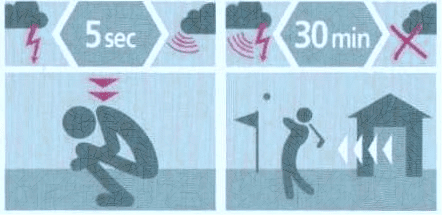
While wind surfing
There is absolutely no protection on a surfboard. Head for the shore at the first sign of an imminent thunderstorm and seek shelter. If there is no time left, put down the mast and crouch down on the surfboard. This does not eliminate the danger however, it is considerably reduced.
In open water
Swimming or wading through water during a thunderstorm means you are placing your life at risk. A strike into the water may be deadly or may paralyse up to 10 metres from the point of strike. Therefore leave the water right away and take cover at the first sign of lightning and thunder.
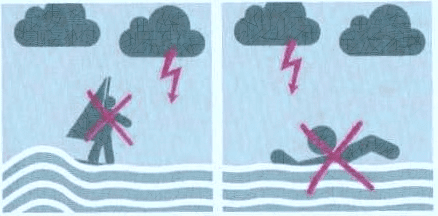
NOTE! Surfing and swimming during a thunderstorm means you are placing your life at risk!
Onboard a boat
Boats are vulnerable to lightning strikes since they present exposed points on the plain water surface. Keep off the deck and do not fish during a thunderstorm. Go into the boat, crouch down and do not touch the rig or any other metal objects.
NOTE! Install a lightning protection system on your boat. For more detailed information, please do not hesitate to contact us at hello@greymattersglobal.com.
Riding and bicycle
If on a bicycle or motorcycle, stop riding, seek shelter (for example under a bridge) or crouch down at a distance of 1m, or even better 3 m, from your vehicle.

Inside a car
Representing a Faraday cage, metal car bodies provide entire protection. In case of heavy rain or rolls of thunder, it is advisable to stop at the next possible place or wait until the thunderstorm has passed to avoid being blinded by the light and losing control.
Inside an airplane
Normally nothing happens if an aircraft is struck by lightning on the ground or even in the air since an aircraft also is a Faraday cage. However, the occurring turbulences are much more dangerous than the lightning flash itself which is why experienced pilots try to avoid flying through thunderstorm cells.
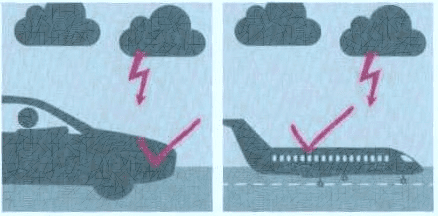
NOTE! Do not leave your car if between seeing the flash and hearing the thunder is less than 15 seconds.
Indoors
In the event of a lightning strike, the external lightning protection system safely discharges the lightning current to the ground and protects your home from fire. Lightning protection systems must be installed by qualified personnel to make sure they are installed conformant with the latest standards. Reliable lightning protection is only assured if the external lightning protection system is combined with an equipotential bonding system and surge protective devices to form a comprehensive protection system.
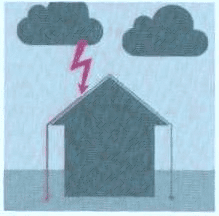
GreyMatters can advise on Surge protective solutions to prevent electrical devices and electronic systems from being damaged or destroyed by lightning.
#5 – Is it safe to… carry on normal living, during a thunderstorm?
When lightning strikes during thunderstorms, do you wonder if it’s safe to carry on normal living?
Is it Safe to watch TV during a thunderstorm?
If your home is equipped with an external and internal lightning protection system and appropriate surge protective devices, you can watch your favourite TV show without risk during the thunderstorm.
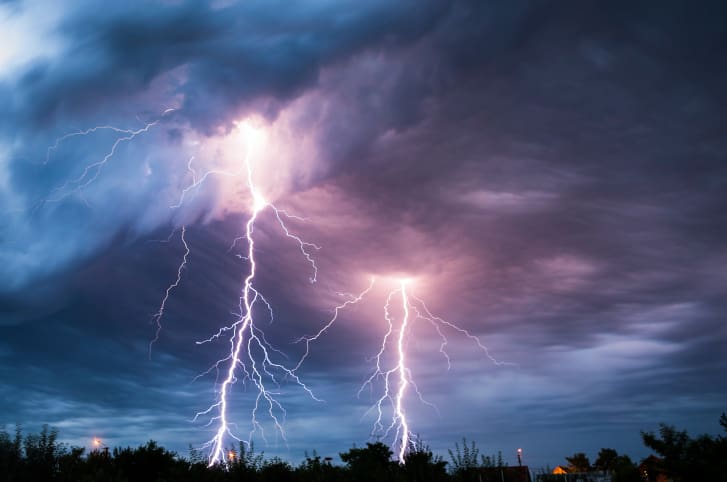
How safe is it to surf the internet during lightning?

Appropriate Surge protective devices for the power supply and data lines protect your PC against the negative effects of surges caused by remote lightning strikes. However, a complete lightning protection system must be installed to protect your home in case of a direct lightning strike.
Am I ok using the telephone during a thunderstorm?
If the telephone system is connected to an equipotential bonded structure. And is protected by surge protective devices. Therefore, it is safe to do so. Also, you may also safely use telephones with mobile handsets.
Even take a shower during a thunderstorm, how safe is that?
It is safe to do so if the metal supply lines are properly integrated (to the latest standards) in the equipotential bonding of the structure.

#6 – What to do if someone is struck by lightning
Common injuries from being struck by lightning can be:
- nerve and muscle paralysis,
- impaired eyesight and hearing,
- raised blood pressure.
If unconscious and convulsing, the victim might be in a cardiac arrest.
- Gasping breath,
- lack of a pulse and
- dilated pupils
… are further signs of a cardiac arrest.
Quick action can save lives.
FIRST THING TO DO …

NOTE! Immediately call your local emergency number and start to give first aid. Please be aware that your local emergency call number may differ.
SECONDLY …
- Try to calm the lightning victim if he/she is conscious.
- Softly talk to the victim until help arrives.
- If the victim is unconscious, put him/her in the recovery position.
- Check the victim’s pulse and breathing.
- If the lightning victim has no pulse or heartbeat, lay him/her on his/her back and (if appropriate) begin cardiopulmonary resuscitation (heart massage and resuscitation)*.
- Do not stop until the victim starts to move, his/her chest begins to rise and fall or help arrives to take over.
*It is advisable to get First Aid training.

References:
DEHN + SOHNE (2012) “When Lightning Strikes, What to do during a Thunderstorm”
The Electrifying Truth About Lightning by Jonathan Erdman, Sr. Meteorologist (2011)
Feature Image:
Disclaimer:
This lightning guide is offered in good-faith based on accepted best practice and understanding at the time of publication. It does not guarantee lightning damage or injury will not occur even after following the advice contained herein. Therefore, no liability shall be accepted for damages to person or property as a result of lightning.
GreyMatters Protects
GreyMatters exists to protect “life” from the harmful effects of lightning and electrical systems.
Engage with us…
- Earthing Design Services & Lightning Protection Design – If high voltage power systems and lightning are causing you concern why not see how we can help with a quick ‘live chat’ below as a start.
- XGSLab – A complete software tool for the simulation of Power, Earthing, Grounding and Lightning Systems, get in touch to request a free demo.
- Get Certified – Start your journey to become certified in Power Systems Earthing & Design.





